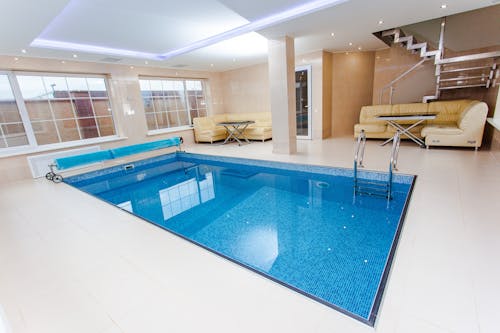If you will try to read some materials that talk about proper maintenance of pool equipment with Australian spa parts, you’d realize that one of their usual highlights is for us to keep an eye on the pool water chemistry, particularly watch out for the rise or fall of the pH level.
The pool water pH is an integral element of the water chemistry that can’t be left out. Otherwise, it runs the risk of posing harm to pool users, such as eye redness or irritation.
What is pH?
The pH is just an abbreviation. It stands for “power of hydrogen” and it is also considered a crucial element in pool water treatment. The purpose of pH is to measure out the scale of acidity to the alkalinity of water, from 0 to 14 range.

If a substance is not acidic or alkaline, then they usually have a pH reading of 7, which is the median point of the pH range. They are often referred to as neutral solutions. If you measure out the pH level of alkalis, they usually have a pH reading that is greater than 7. As for the acid types, their pH level is always below 7.
For pool equipment installations, the recommended range is 7.2 – 7.6. The underlying reason why it is of paramount importance to keep the pH level along those lines is to keep the chlorine’s disinfection property up and high to remain efficient. A high pH level will cause its efficiency, and coagulants, to significantly fall off.
However, letting the pH levels drop or be at the lower range, runs the risk of having the pool water equipment become too corrosive.
It is sad to see that many pool plant operators don’t fully understand how the pH level can have a significant impact on the disinfection process. This explains the reason why they take it for granted and thus would deliberately brush off taking corrections about it.
Consequently, what they will have in the end is low-quality pool equipment water. And without them noticing this, it also renders them spend so much more on chlorine than necessary.
How Chlorine Impacts Your Pool Water?
If chlorine is added to your pool equipment water, it will react by producing the following two substances:
- Hypochlorite ion
- Hypochlorous acid
Hypochlorous acid is the key disinfectant of chlorine. It is 100x more intensive when placed alongside the hypochlorite ion, which is what we need to have more of.
The higher the pH reading you have for your pool water, the higher amounts of hypochlorite it has. But the lower the pH reading you have, the more hypochlorous acid there is.

At 7.5 pH level, count that the water in your pool equipment will have around 45% of its chlorine as hypochlorous acid. This means to say that if you have a free chlorine reading of 1.0 mg/l after, the active disinfectant would be 0.45 mg/l only
If you will let the pH level reach 8.0, this would render 25% of the chlorine as hypochlorous acid. And if you have again a test reading at 1.0 mg/l, the active disinfectant amount will be 0.25 mg/l only. This is not adequate for disinfection, not too potent because it is way too low.
This one’s very important to keep in mind. Free chlorine reading with DPD1 tablet test covers also the hypochlorite and hypochlorous acid. The one setback from which is that they don’t give you an idea with regards to the proportion for each.
Hence, it is crucial for pool plant operators with Australian spa parts to see the reason how and why pH levels have such a huge impact on the process of disinfection.
Since both sodium hypochlorite and calcium hypochlorite usually come with an extremely high pH scale, the pool water pH has no other direction to go but up the moment that they are dosed into the pool equipment.